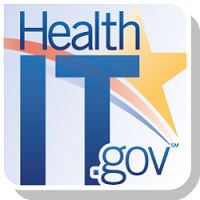 By Andrew Gettinger, M.D./ Chief Medical Information Officer, Director, Office of Clinical Quality and Safety , and
By Andrew Gettinger, M.D./ Chief Medical Information Officer, Director, Office of Clinical Quality and Safety , and
Marcy Opstal/ Health Scientist (Informatics), Office of Clinical Quality and Safety
Twitter:@ONC_HealthIT
With the rapid adoption of certified electronic health records (EHRs) and health information technology (health IT) tools, the Office of the National Coordinator for Health Information Technology (ONC) has been working to help address concerns about the safe use of these tools, including issuing legislative proposals to better foster the flow of health information.
Informed by the July 2015 Health IT Safety Center Roadmap, the Health IT Safety Collaborative, as proposed, would be a voluntary public-private partnership with confidentiality protections for health IT developers and health care providers to identify best practices, address concerns, and cultivate health IT safety competencies across the care continuum.
ONC is committed to continuing other efforts to foster ever-safer health IT and health care as well. One topic we have focused on is pick lists, also known as drop-down lists in an EHR, which are often used when a provider first enters patient information, and subsequently orders prescriptions and dosages for each patient. Specifically, an ONC contractor, RTI International, convened a workgroup of stakeholder experts in clinical care and health IT, as well as participants representing the patient perspective, to review available evidence and examine recommendations to address medication management errors in ambulatory EHR systems.
Among other things, the findings of this workgroup resulted in the creation of the Report on the Safe Use of Pick Lists in Ambulatory Care Settings: Issues and Recommended Solutions for Improved Usability in Patient Selection and Medication Ordering. This report summarizes the current state of knowledge and provides recommendations to help health IT developers, implementers, chief medical information officers (CMIOs), and patient care teams minimize the risk of pick list errors and facilitate detection of errors before patients may be harmed.
While pick list errors can occur during several tasks in the medication management process, the report focuses on two error types: (1) those that occur when the wrong patient’s record is being used (i.e., wrong-patient error) or (2) those that occur when the wrong medication is selected from a drop-down list (i.e., wrong-medication errors). The report also identifies factors may either increase or decrease the risk of each error.
The recommendations and resources were developed with a focus on ambulatory care settings, such as doctors’ offices, but many are also appropriate for consideration in other care settings, such as hospitals and long-term care facilities. The workgroup identified six available and beneficial straightforward measures that were not currently being used by many organizations in their processes for ordering medications using an EHR:
- Use specific design features to reduce wrong-patient pick list errors such as using a patient’s photograph in the record;
- Standardize the names of drugs listed in the EHR;
- Implement best practices to organize, design, and configure pick lists, including the standardized drugs being prescribed through the EHR;
- Create a summary review screen that can be viewed before a medication order is completed;
- Make it easier for ordering clinicians to correct or revise incorrect orders and for the system to track those circumstances as a means to identify areas in which EHR improvements might be considered; and
- Provide all patients with lists of their current medications, including a description of why each medication is prescribed.
While we continue to advance health IT safety across the board – including by working with Congress to create the Health IT Safety Collaborative – this report and the recommendations developed with a wide range of stakeholders represent an important step to make health IT safer, and more safely used, in all health care settings.
ONC hosted a webinar to discuss highlights from the report’s findings, and how its resources might be put into action on November 17, 2016. Slides from this webinar are now available*
*Persons using assistive technology may not be able to fully access information in this file. For assistance, contact ONC at onc.request@hhs.gov.
This post was originally published on the Health IT Buzz and is syndicated here with permission.
